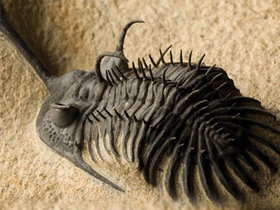According to the evolutionist scenario, primitive single-celled organisms that came into existence by chance were the original ancestors of all living things. Over the course of time, these organisms that formed multiplied and gave rise to multi-celled organisms.
According to evolutionists, this was the first step in the passage from one cell to many. Organisms at this stage of development became genuinely multi-cellular with the division of labor among cells in their colony. Cells lost the ability to exist independently once they gave rise to multi-cellular organisms.
The scenario continues thus: . At this stage of the evolutionary process, as the need to act independently decreased-or as their chances of survival improved by living as a group-, the differences between cells grew more distinct. For whatever reason, cells continued differentiating and increasing their division of labor, giving rise to increasingly multicellular organisms.
At the beginning of this fantastical view lie single-celled organisms that are regarded as primitive and simple. Yet single-celled organisms are not simple life forms, as evolutionists suggest, but neither do they have the consciousness with which to make decisions and assume new duties. Single-celled organisms may have a simpler structure than multicellular ones, but by itself is not evidence that they are primitive. Indeed, although a single-celled bacterium still possesses a complexity that amazes those who investigate it.
 Despite being very small, bacteria possess exceedingly complex features, in terms of both structure and function. |
A bacterium is far more complex than any inanimate system known to man. There is not a laboratory in the world which can compete with the biochemical activity of the smallest living organism. 226
The evolutionist James A. Shapiro admits that these highly detailed characteristics features make bacteria a complex form of life:
Although bacteria are tiny, they display biochemical, structural and behavioral complexities that outstrip scientific description. In keeping with the current microelectronics revolution, it may make more sense to equate their size with sophistication rather than with simplicity. . . 227
226. Sir James Gray, chapter in Science Today (1961), p. 21
227. James A. Shapiro, "Bacteria as Multicellular Organisms," Scientific American, Vol. 258, No. 6, June 1988, p. 82.


